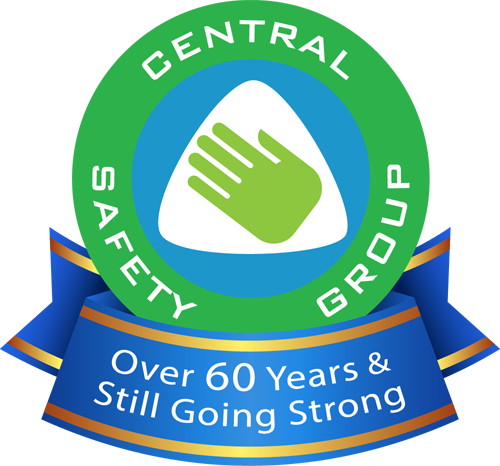Update to EWP Requirements
On the 25 November 2021, WorkSafe Victoria gave a presentation on the 2021 Industry Standard on Elevated Work Platforms (EWPs). The presenters were Andy Taylor, Senior Engineer and Brian Chamberlin, Education Officer, WorkSafe Victoria.
There have been 10 fatalities associated with EWPs over the last 10 years in Victoria and there are 30 claims per year for incidents.
An EWP, where the industry standard applies, has a platform height that can be adjusted by: a powered scissor mechanism; a telescoping boom or tower; articulation or any combination of those.
An EWP is not:
- a work platform used in conjunction with a forklift
- an order picking forklift
- work boxes temporarily attached to a crane
- suspended scaffolds
- lifts (elevators)
- non slewing mobile cranes (telehandlers), except when configured as an EWP
- building maintenance units and equipment
- mast climbing work platforms
- personnel and material hoists
The industry standard also does not apply to:
- horticultural EWPs (specifically designed for the horticultural industry)
- plant or equipment used by Victorian fire services (Country Fire Authority and Fire Rescue Victoria)
Selection
There are five types of EWPs:
- Scissor
- Vertical Mask
- Truck Mounted (bucket tray or cherry picker)
- Self-Propelled Boom Lift
- Trail Mounted Boom Lift – these are smaller and often used for tree pruning -also referred to as a cherry picker
Operators must select the right piece of equipment for the job, not just whatever is available on site. The first option that should be considered is the use of scaffolding in preference to an EWP. Other considerations are capacity of the machine, hazards at the worksite, emergency procedures etc.
Training
Training is required for:
- All Operators -if over 11m, they will require a high-risk licence
- Safety Observers -in the operation of the type of equipment and, if over 11m, they will require a high-risk licence
- Electrical Spotters -they must have an Energy Safety Victoria card
- Training may be required for others including Supervisors and delivery drivers, who may need a licence if they operate the EWP as part of the delivery or pick up
If the EWP reach is less than 11m, proof of training and competency is required e.g. an EWPA yellow card.
The Safety Observer must have a line of sight to the working EWP, but cannot double as the Electrical Spotter. The Safety Observer can be used for more than one piece of equipment if they are all in the line of sight and the observer has been trained in the operation of all the types of equipment being operated. The Safety Observer cannot leave the area until the EWP has ceased operation and all is safe.
Safe systems of work
If the equipment is to be used on a slab, the slab must be able to take the weight of the EWP; if on the ground, it must also be suitable (hazard free).
When working on inclines, the ground conditions must be checked prior to setting up the EWP with checks for slippery surfaces. The brake wheels must be facing up the incline and the boom bucket must be on the upside of the base and the outriggers level.
A full body harness must be worn by all persons on the platform, and they must be secured to an anchor point.
Where working over water, a risk assessment must be completed, and the wearing of the safety harness may be exempted.
Considerations for the collection and delivery of the EWP include traffic management; lighting at the site as mornings and evenings are the usual times; harnesses to be worn; ground surface; overhead power lines etc.
Crushing hazards
These have been involved in a number of fatalities and can occur where:
- overhead or adjacent fixed structures are present near the EWP operational areas, e.g. roofs; structural beams; cable trays; pipework.
- the platform moves unexpectedly while the EWP is close to an overhead or adjacent fixed structure, due to unstable ground conditions; an operator not being familiar with the specific EWP model controls; malfunction of the controls.
- ground-based obstacles are in close proximity to the EWP that may divert an operator’s attention from overhead or adjacent structures (or their passenger’s safety) while travelling or manoeuvring the EWP.
Controls in these circumstances could include secondary guarding, pressure sensors remote controls with the operator on ground level, etc.
Emergency procedures and resources
These need to be in place to rescue the operator(s) of an EWP should they become sick, injured, stranded or trapped at height due to malfunction or misuse of the EWP. Other emergency situations can occur when the operator has fallen outside the platform of the EWP and is suspended by a harness. No one should operate an EWP alone and the rescue person / observer must understand all the ground controls on the EWP. These controls must be checked prior to operation.
Inspection and maintenance
EWPs must be regularly inspected and maintained to ensure that the risks associated with their use are controlled. This may be achieved by adhering to the inspection and maintenance recommendations supplied by the manufacturer or from relevant Australian Standards. Log books, pre-start checklists, preventative and breakdown maintenance, and tagging systems all need to be part of the safe work process.
The WorkSafe Victoria Industry Standard on EWPs is available on their website and contains further information. https://www.worksafe.vic.gov.au/resources/elevating-work-platforms-industry-standard
You can also view an introduction to the new Standard on the WorkSafe Victoria Youtube channel at: https://www.youtube.com/watch?v=eNGxuAAM0sE


